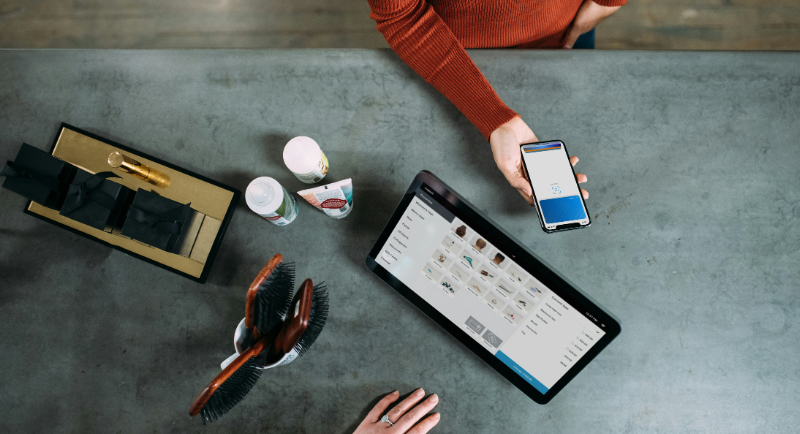By Mal Siriwardhane, founder and CEO of B dynamic
The Australian retail landscape faces constant evolution driven by technological advancements, changing consumer behaviour and economic pressures
Mal Siriwardhane, founder and CEO of B dynamic, Australia faces significant changes across the retail sector in response to global trends, technology advancements and shifts in consumer behaviour.
“This year we are going to see a lot of change. While there are some economic headwinds afoot, we are also going to experience a lot of growth across the retail sector as interest rates start to ease and the flow on effect reaches consumer wallets,” he said.
“Consumers have had to be very savvy over the last few years in response to cost-of-living pressures. This has changed consumer behaviour and also spearheaded some interesting trends, all of which provide opportunities and challenges for retailers.”

Mal Siriwardhane, founder and CEO of B dynamic
Key retail trends for 2025
Hyper-personalisation in online shopping
“Consumers expect tailored shopping experiences driven by AI and data analytics. Retailers will increasingly use real-time customer data to offer personalised recommendations, customised promotions and curated product selections,” Sirwardhane said.
“Big sweeping offers will start to disappear and more targeted and curated offers will appear based on the buying habits of consumers.”
Renewed focus on sustainable and ethical retailing
“Sustainability has faltered as consumers have not been able to pay for the luxury of this feature. However as the cost of living eases, sustainability will undergo a big resurgence,” Sirwardhane said.
“It will be a top priority in 2025, with retailers integrating eco-friendly packaging, carbon-neutral delivery options and ethical sourcing into their supply chains. Brands that fail to demonstrate sustainability efforts risk losing consumer trust.”
Omnichannel shopping becomes standard
“Customers demand seamless shopping experiences across multiple channels, from physical stores to online platforms and social commerce. Retailers will focus on integrating in-store and online experiences with real-time inventory visibility and hybrid shopping models,” Siriwardhane said.
“Whether it is a full-scale store or a pop up, we will see more and more hybrid options for shoppers to engage with brands.”
Acceleration of same-day and on-demand delivery
“The demand for faster fulfillment will see major retailers investing in advanced logistics networks and 3PL partnerships to enable same-day and even one-hour delivery services, particularly in metro areas,” Siriwardhane said.
“B dynamic has already reimagined and bolstered our capabilities to offer retailers same day delivery. This will become the norm in 2025 for many retailers as they compete for share of wallet.”
AI-powered customer support and virtual assistants
“AI chatbots and virtual assistants will become mainstream in retail in 2025, offering 24/7 customer support, streamlining queries and personalising interactions to improve customer experience and retention,” Siriwardhane said.
“In fact, the sophistication of AI will be so advanced that shoppers won’t even know they are engaging with a bot, whether it be in text or voice form.”
Expansion of recommerce and the circular economy
“Resale platforms, rental models and refurbished goods will gain traction as consumers prioritise sustainability and affordability. Brands will introduce trade-in programs and second-hand marketplaces to extend product lifecycles,” Siriwardhane said.
“These will sit parallel with their core lines of new products.”
Growth of direct-to-consumer (DTC) brands
“More brands will bypass traditional retail channels to build direct relationships with consumers, leveraging social media, influencer marketing and exclusive online experiences to drive engagement and sales,” Siriwardhane said.
“The role of 3PL companies in powering this growing model of retailism will intensify as consumers increasingly expect affordable and fast products.”
Increased adoption of augmented reality (AR) shopping experiences
“AR will redefine the retail experience, enabling consumers to visualise products in their space before purchasing, from furniture placement to virtual try-ons for fashion and beauty products,” Siriwardhane.
“This will be especially prevalent in the big and bulky sector where shoppers want to buy online in a confident and low-risk manner.”
Retailers prioritising inventory agility and supply chain resilience
“The unpredictability of global supply chains has highlighted the need for retailers to diversify suppliers, optimise warehousing and leverage data-driven demand forecasting to prevent stock shortages and overstocking,” Siriwardhane said.
“The requirement of partnering with the right 3PL partner is going to become even more crucial for retailers in 2025.”
Boom in subscription-based retail models
“Subscription services will continue to grow across various sectors, from fashion and beauty to food and wellness, providing consumers with convenience, exclusivity and personalised offerings,” Siriwardhane said.
“This will also be accompanied by a rise in loyalty competition in 2025 to increase customer stickiness.”
Cross-Sector 3PL
• Whole of supply chain technology solution
• Effortless multifaceted coordination of logistics
• Seamless integration with business
• Visibility, data and powerful insights
B dynamic Logistics has introduced a new category of logistics in Australia called Cross-Sector 3PL. It brings together all areas of logistics, expertise and capability under one roof, within one dynamic system that is capable of operating thousands of transactions within a short period of time. The result is seamless cost-effective supply chain operations.
Cross-Sector 3PL connects customer systems, warehouse management systems and transporter systems, providing customers with extensive integration options, custom data feeds, business intelligence, dashboards and reporting for all facets of logistics including big and bulky, port/manufacturing facility to warehouse, warehouse to stockists and warehouse to customers.

